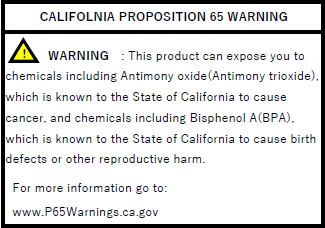Measures are taken to reduce toxic chemical substances that cause environmental pollution. We are in compliance with Pollutant Release and Transfer Register Law (PRTR Law) by studying the release of certain chemical substances into the environment and promoting management toxic chemicals and improvement of the environment.
ECO series consists of halogen free materials, it does not generate halogen gas (fluoride and chlorine etc.), at burned. And, there is not fear of the dioxin generation.
REACH regulations are a system involving registration, assessment, approval and restrictions of chemical substances that went into effect on June 1, 2007 for the purpose of protecting human and the environment health and enhance ability to compete with the EU chemical industry.
In compliance with REACH regulations, we conduct studies of substances that must be registered with European Chemical Agency (ECHA); we also manage information concerning SVHC contained in our products and strive to appropriately manage information pertaining to chemical substances contained in our products so it can be provided to our customers.
The RoHS Directive restricts the use of specified hazardous substances. The directive is aimed at preventing the negative impact these substances would have on people and the environment. This prevents the EU sale and distribution of products made with these substances and dictates that waste from electrical and electronic equipment should be processed based on the WEEE Directive.
Cables are not exempt, and compliance is required under the RoHS Directive (2011/65/EU and (EU)2015/863).
Our products do not contain the 10 restricted substances (lead, cadmium, hexavalent chromium, mercury, PBB, PBDE, DEHP, DBP, BBP, DIBP) and are compliant with the RoHS Directive.
(*A CE marking is required for RoHS Directive compliance)
chemSHERPA is an information transmission scheme that shares information with the entire supply chain on products that contain the substance groups applicable to major domestic and foreign management standards (the REACH Regulation, the RoHS Directive, the Chemical Substances Control Law, etc.). It also aims to promote the accurate and efficient transmission of information.
Through implementing operations that utilize chemSHERPA to keep up with environmental regulations that are frequently updated, we are able to suitably manage chemical substances and maintain a structure that allows us to offer safe products to our customers.
Tantalum, tin, gold and tungsten (also known as “3TG”) have been defined as conflict minerals. The company is obligated to investigate and disclose whether minerals contained in its products are used as a source of funding regional armed insurgencies on an annual basis.
Nichigoh Communication Wire co., Ltd takes measures to avoid using conflict minerals when procuring materials, parts and products so as not to aid conflicts. We go back through our supply chain to see is any of our products contain minerals that supply funding for regional armed insurgencies. We utilize a CFSI ledger (conflict mineral reporting template(CMRT)) to make sure we do not use conflict minerals as raw materials.
We ask companies we do business with to not use conflict minerals and go about procurement with this in mind.
Countries where conflict minerals are excavated

Proposition 65 is a law aimed at protecting the citizens of California from chemical substances and disclosing information related to chemical substance exposure. Certain products contain the regulated chemical substances, which are Antimony oxide (Antimony trioxide), Bisphenol A (BPA) , Diisononyl phthalate (DINP), Carbon black, Titanium(IV) Oxide, Diisodecyl Phthalate and Trimethyl Phosphate. Please inquire as to how we are corresponding to Proposition 65 with our products and how the displays should be handled.
■Display example

© 2020 NICHIGOH COMMUNICATION ELECTRIC WIRE CO.,LTD. All Rights Reserved.